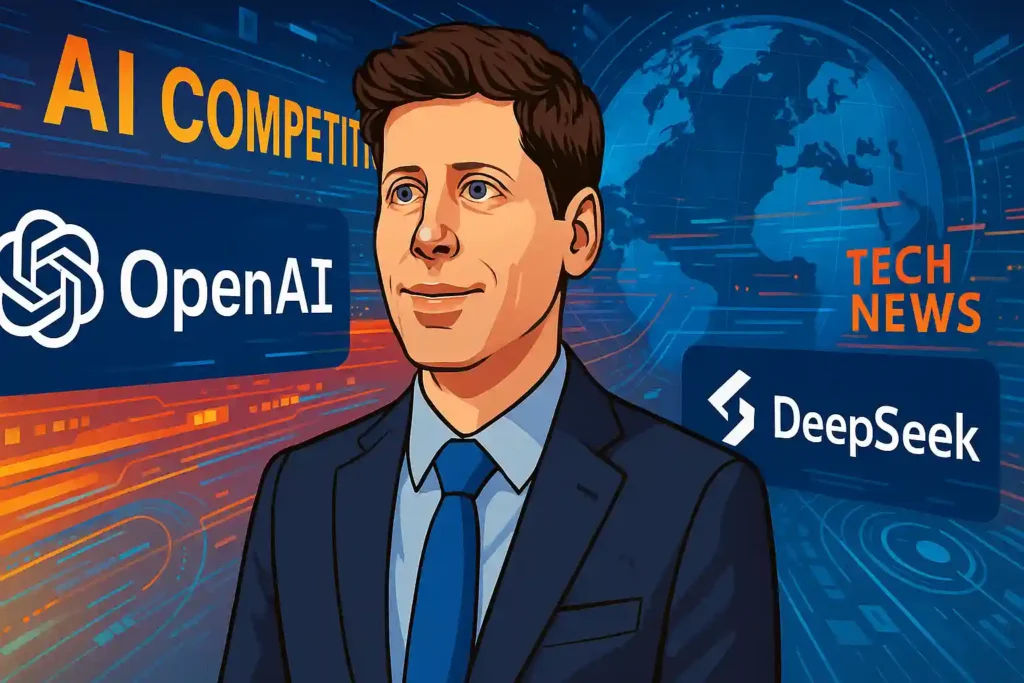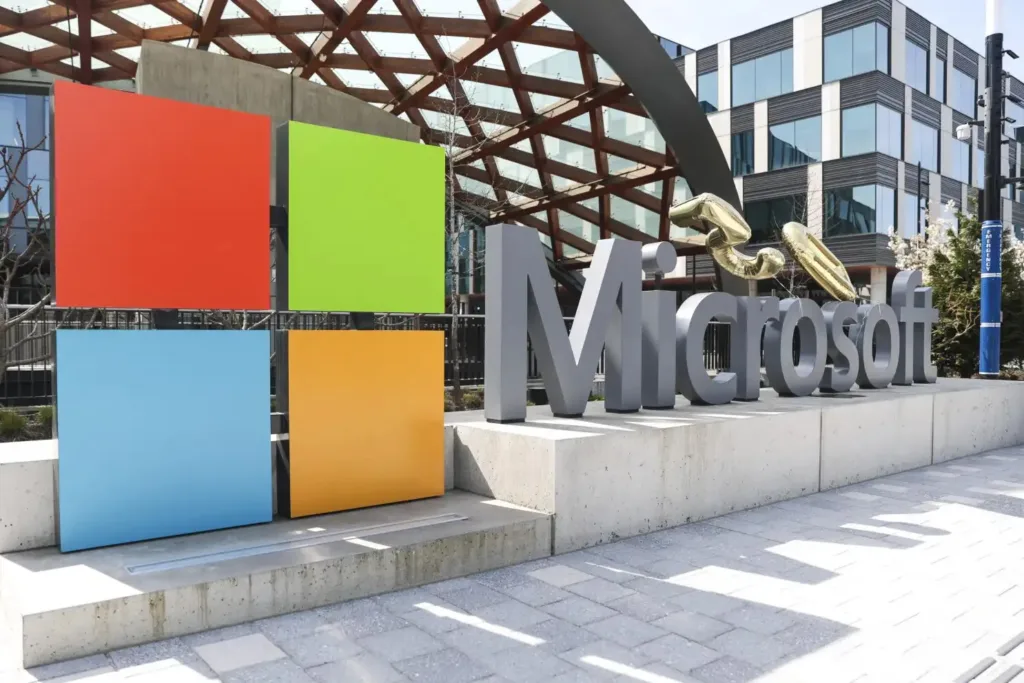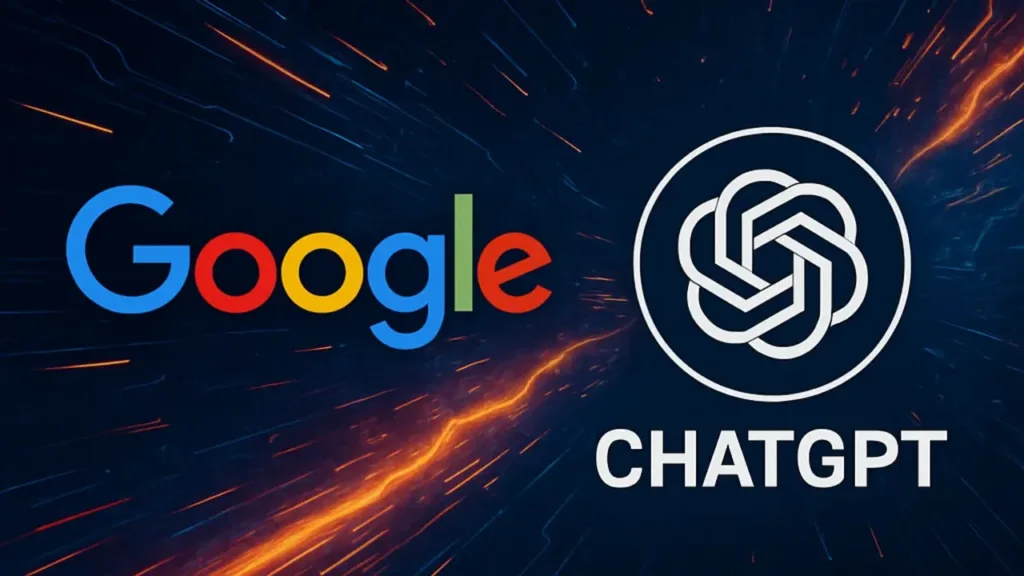Key Highlights
- OpenAI launched gpt-oss-120b and gpt-oss-20b, its first open models since GPT-2.
- CEO Sam Altman acknowledged pressure from China’s DeepSeek influenced the move.
- The models can run locally on laptops or a single GPU.
- OpenAI calls them “open-weight” models, not fully open-source.
- Industry experts see this as a major shift in OpenAI’s strategy toward transparency.

When OpenAI released its new gpt-oss-120b and gpt-oss-20b models earlier this month, the launch itself was big news. It was the company’s first time publishing open models since the release of GPT-2 back in 2019. But what caught even more attention was CEO Sam Altman’s candid admission: the move was directly influenced by the rapid rise of open-source challengers like DeepSeek.
Speaking in an interview with CNBC, Altman said bluntly that if OpenAI hadn’t acted, “the world was gonna head to be mostly built on Chinese open-source models.” That rare moment of honesty underlined just how much pressure Silicon Valley’s biggest AI player is feeling from outside the United States.
OpenAI’s First Open Models in Years
The two newly launched models—gpt-oss-20b and gpt-oss-120b—are designed for developers and researchers who want to run powerful AI systems on their own machines. The smaller 20B version can operate on a laptop with 16GB RAM, while the 120B variant can be deployed on a single GPU.
Both are built with chain-of-thought reasoning, a method that allows the AI to “think” step by step, boosting accuracy for tasks like coding, math, and problem-solving. Benchmark tests show these open models perform close to OpenAI’s earlier proprietary systems, such as o3-mini.
Importantly, OpenAI is calling these “open-weight” rather than fully open-source models. The weights are available for developers to use and customize, but the training data and code remain private—a balance between transparency and control.
DeepSeek’s Disruption
The reason behind this sudden shift is clear: DeepSeek. Over the past year, the Chinese project has shaken the global AI industry with its efficient, high-performance open-source models. By being cheaper to run and accessible to anyone, DeepSeek has attracted developers and startups worldwide.
Altman himself has previously described DeepSeek’s R1 model as “impressive.” But this time, he admitted it forced OpenAI’s hand. Without matching that openness, he suggested, OpenAI risked losing influence to China’s fast-growing AI ecosystem.
Industry analysts say DeepSeek’s success has become a “wake-up call” for American AI firms, proving that open-source can compete with, and sometimes even outperform, closed-door approaches.
𝗥𝗲𝗮𝗱 𝗠𝗼𝗿𝗲
What It Means for the AI Industry
The release of OpenAI’s gpt-oss models marks a turning point in the global AI race. For years, OpenAI argued that keeping models closed was necessary for safety. Now, the company is acknowledging that openness is not just a nice-to-have but a competitive necessity.
This move could push other big players—like Google, Meta, and Anthropic—to rethink their strategies. Meta has already leaned into open releases with its LLaMA models, and with OpenAI following suit, the pressure across the industry will only increase.
Why It Matters for India
For India’s fast-growing tech and startup ecosystem, the timing couldn’t be better. Access to powerful models that can run locally reduces dependence on expensive cloud services. Universities, research labs, and small AI companies can now experiment with advanced tools without burning through budgets.
As India ramps up investments in AI—from fintech to healthcare—more open access could speed up local innovation. Simply put, this move doesn’t just impact Silicon Valley and Beijing; it will be felt in Bengaluru, Hyderabad, and other Indian tech hubs too.
Final Context
Altman’s admission was unusually direct for a tech CEO, and it highlights how quickly the AI landscape is shifting. With DeepSeek raising the bar on openness and efficiency, OpenAI has responded by opening up—at least partially—for the first time in years.
Whether this will lead to more fully open releases in the future remains to be seen. But for now, the arrival of gpt-oss-120b and gpt-oss-20b signals a new chapter in the AI race—one where openness is no longer optional, but essential.
Sources: Reuters, TechCrunch, Wired, Livemint, Economic Times



